
4-Xtremes – Part 22: Tunisia – exciting and unexpected
Series: 4-Xtremes – The World Tour
Tunisia is just a desert? Wrong! The country has a lot more to offer than just sand dunes. For example film locations for one of the most successful film sagas of all time. Or rare animals. Andrea and Mike take you on a journey of discovery!
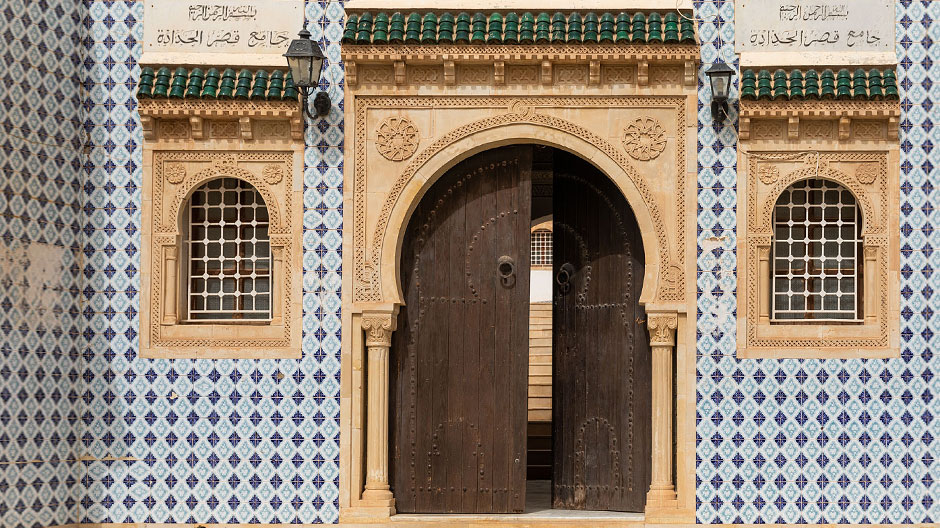
Please enter! Tunisia, with its 160,000 square kilometres, is not that large – but has a lot to offer.
Whenever you think of Tunisia, you’re likely to quickly conjure up images of a barren landscape. And rightly so; after all the Sahara covers a large part of the country. However Tunisia is still varied!
That starts with the landscape that isn’t just barren at all. Up north, there is a lot of lush green. Practically every square metre is farmed. If you drive southwards you cross a range of mountains and the landscape becomes drier and sandier. But it’s still not a desert.
Scooters and goats at a historical site.
Thugga lies in this semi-dry region. The remains of the ancient Roman town have been uncovered and are well-preserved. Just before sunset we wander through the ruins – and are amazed to see locals riding towards us on scooters. They still use the ancient roads. And shepherds drive their sheep through the ruins.
Our route south takes us through villages with narrow roads – particularly on market days. But people here are patient. Everyone drives at walking pace, they take turns making space for each other and there is no stress.
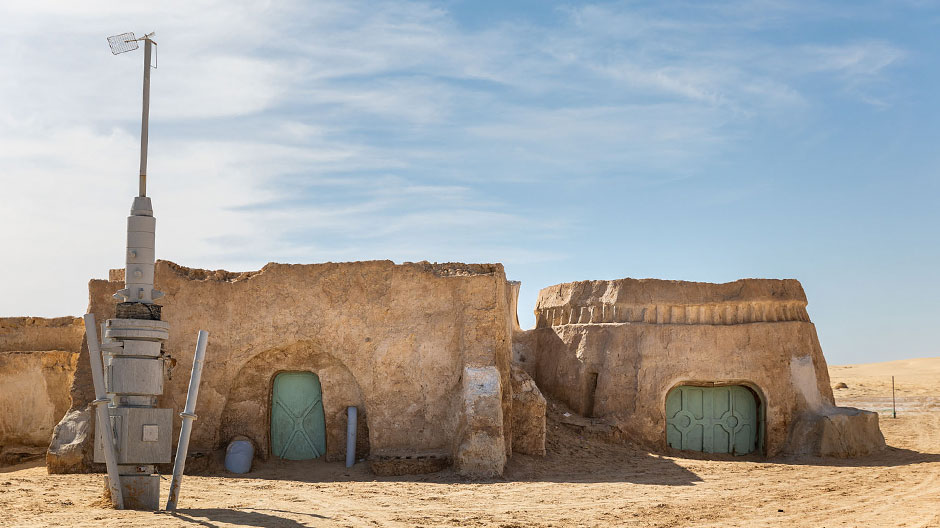
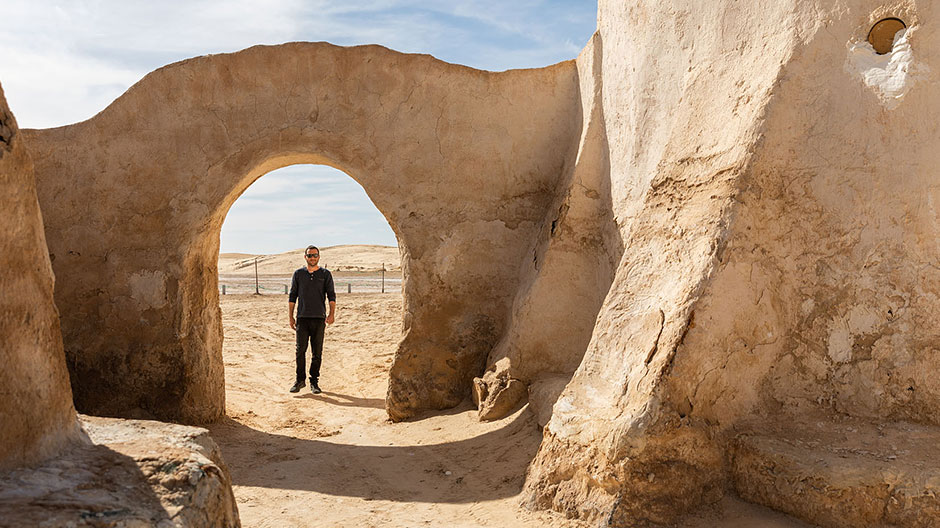
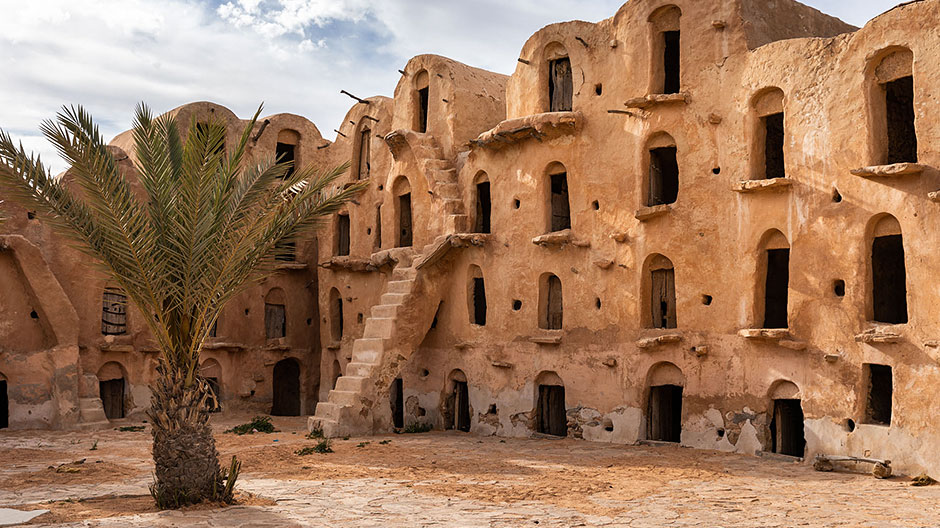
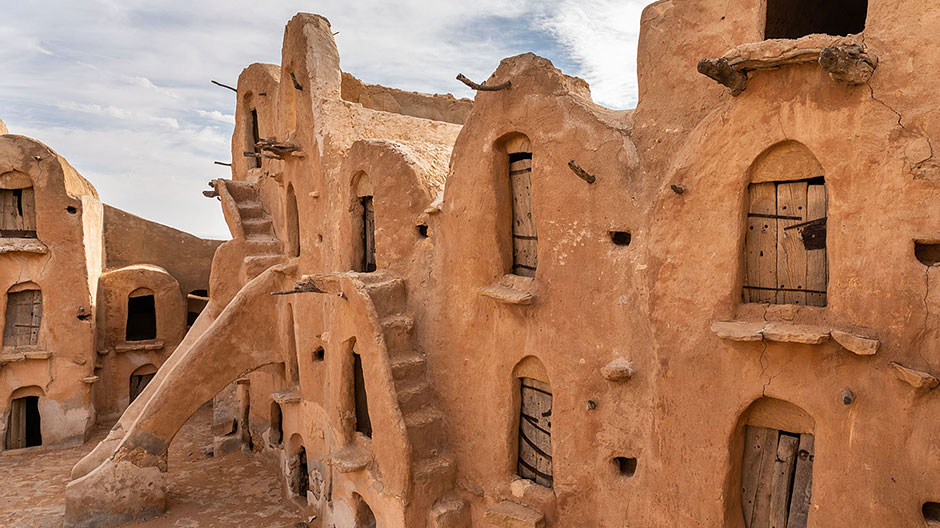
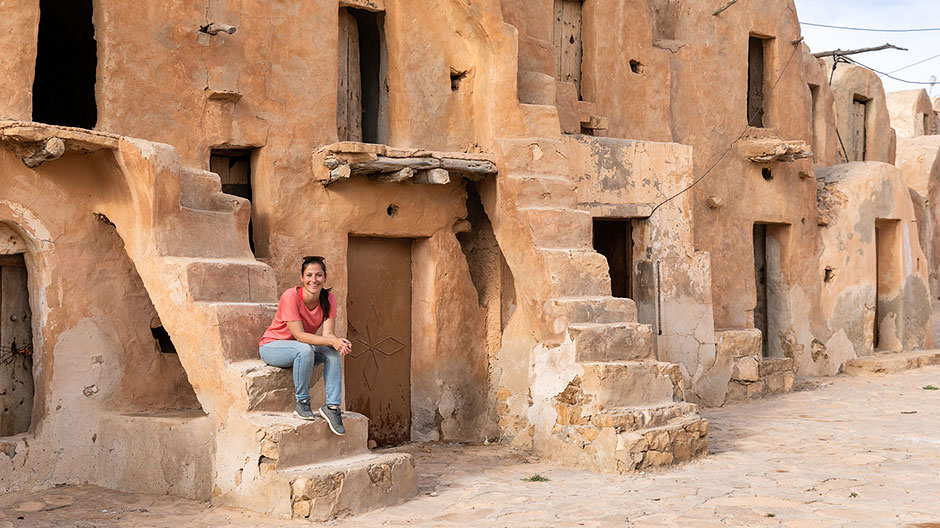
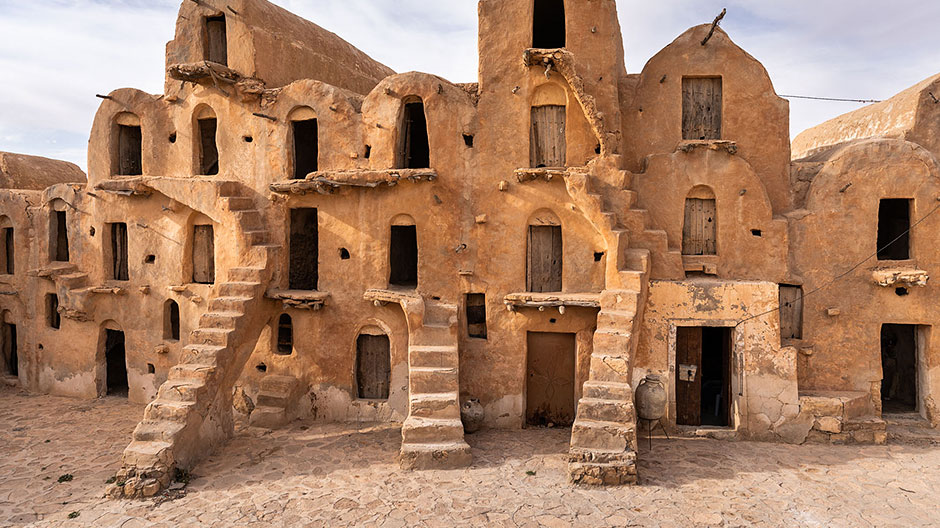
Always under control.
Our encounters with uniformed officials are also stress-free: almost every second night, the tourist police visit us, sometimes accompanied by soldiers. The officers take note of our data and ask where we’ve come from and where we’re going. Main junctions are monitored with CCTV and there is often a military post. All the same: contact with the officials is always friendly.
What we didn’t know: in Tunisia you can visit several film locations for the ’Star Wars’ films. One of them is in the south-west where the steppe has long since transitioned into the Sahara. Close to Chott el Gharsa, a sedimentary basin, clay buildings with domed roofs stand in the middle of nowhere. Something like an aerial reaches skyward. Welcome to the settlement of Mos Espa! You can see it in “Star Wars: Episode I – The Phantom Menace”. We’re not really huge fans, but we were still impressed.
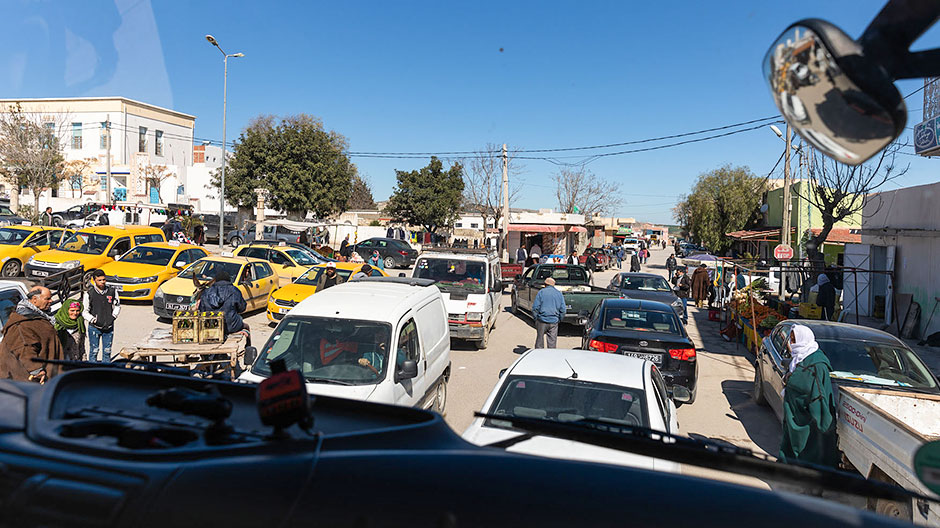
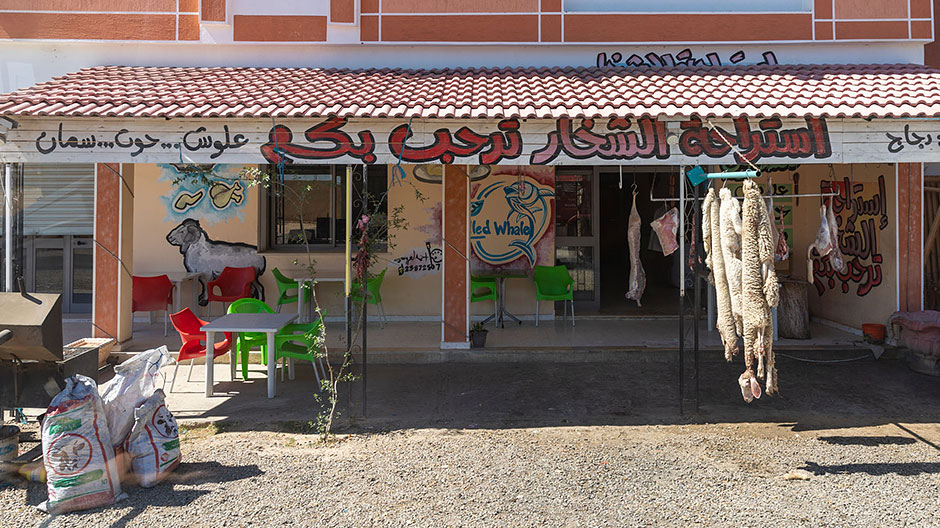
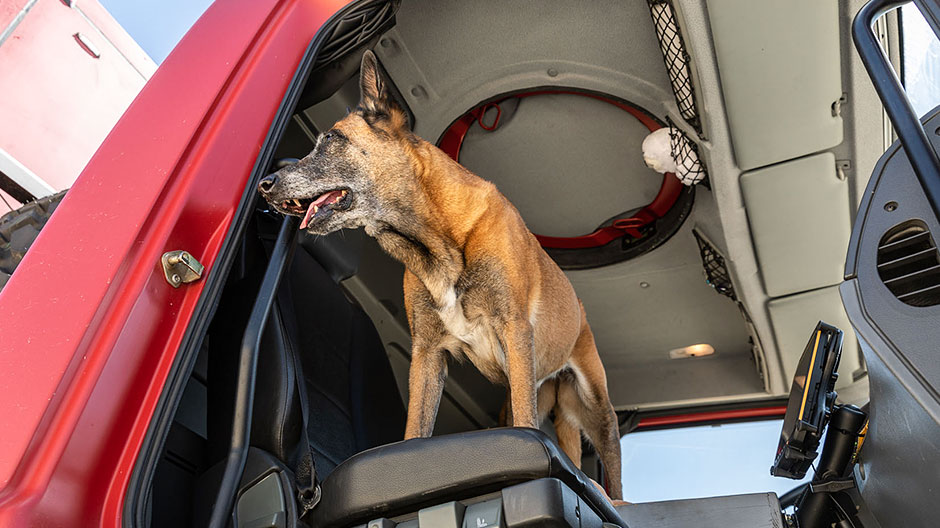
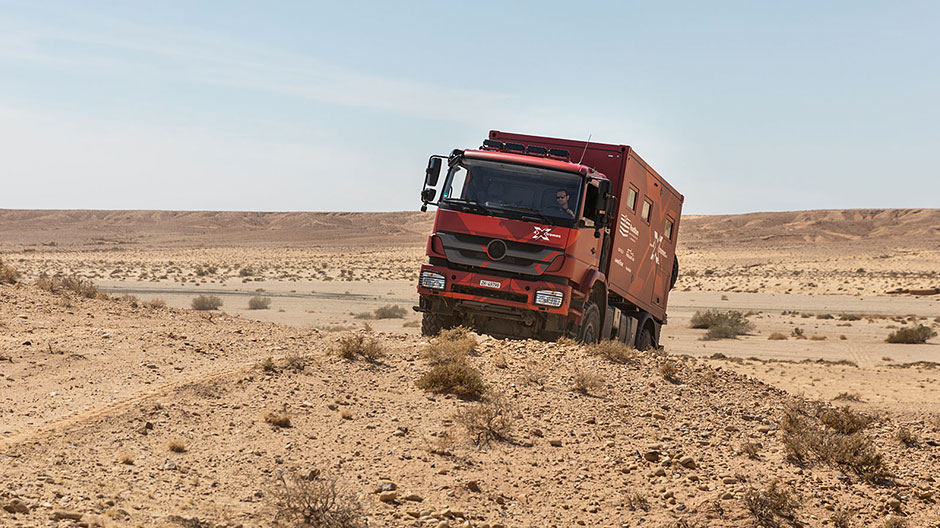
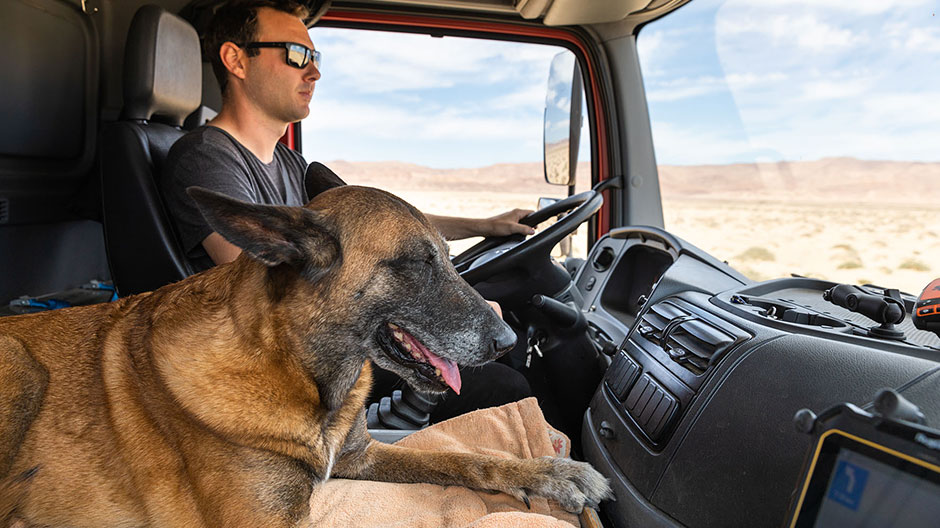
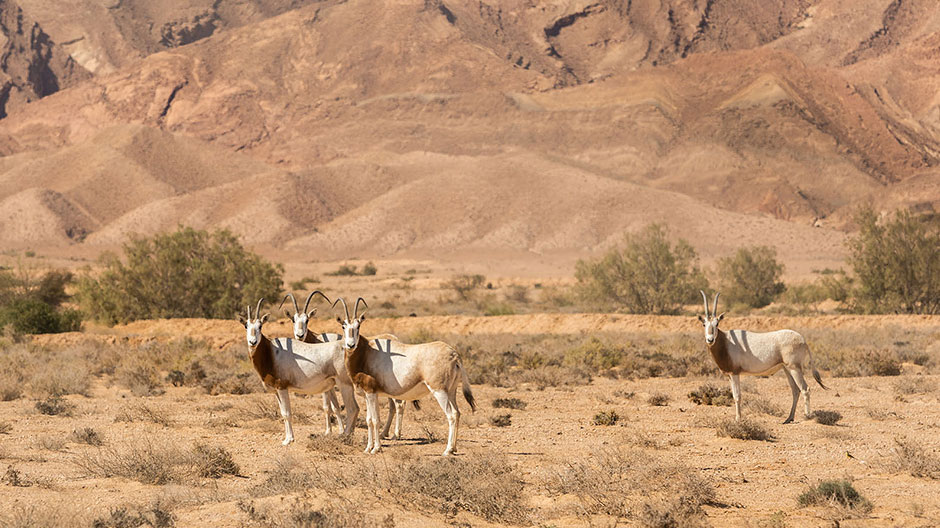
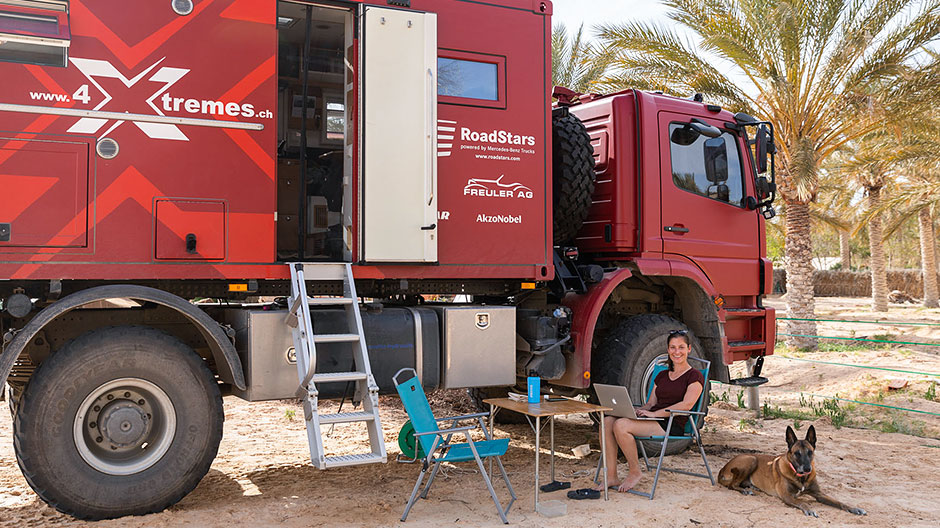
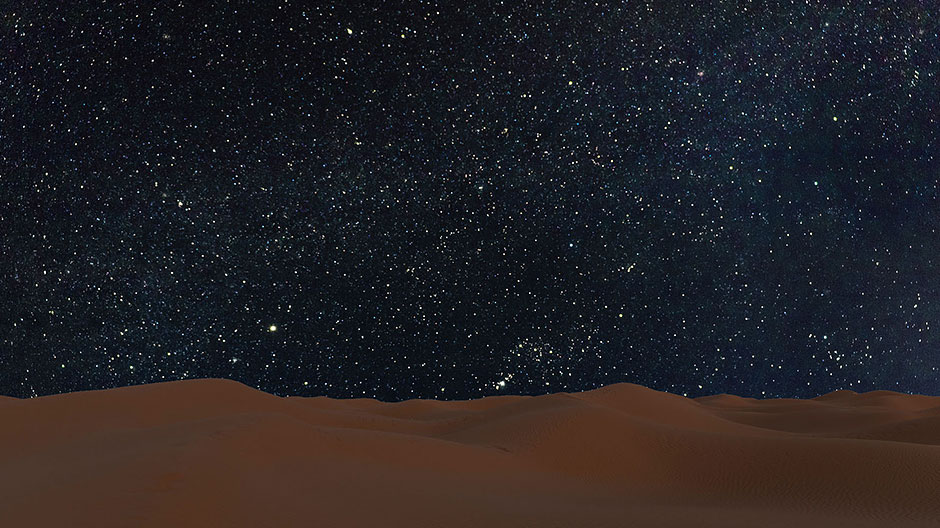
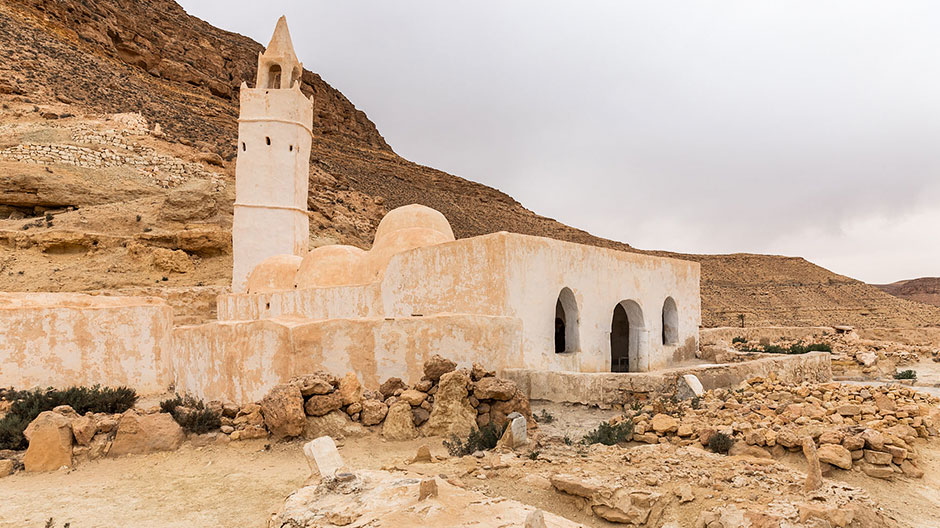
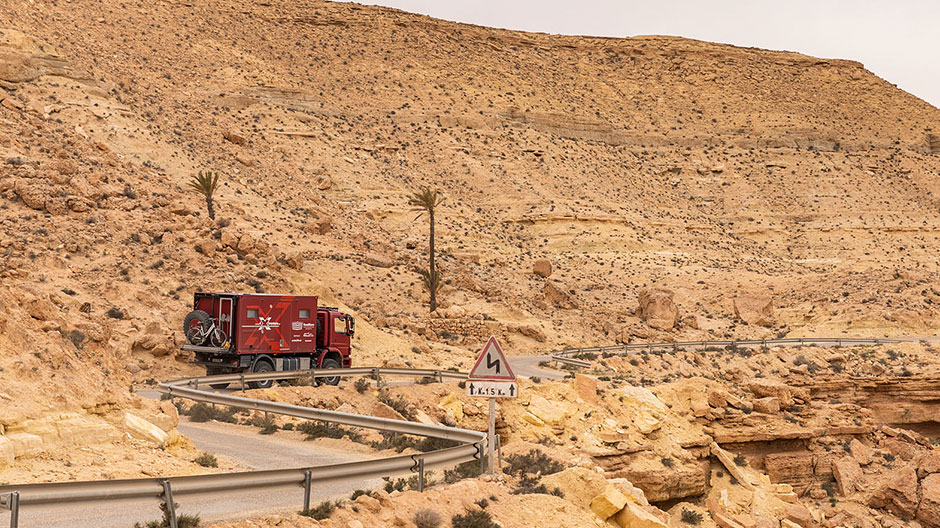
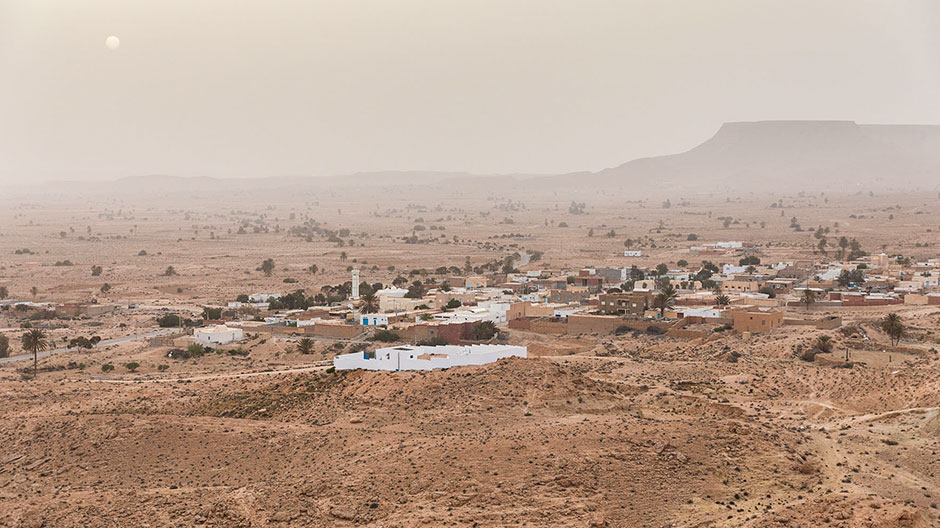
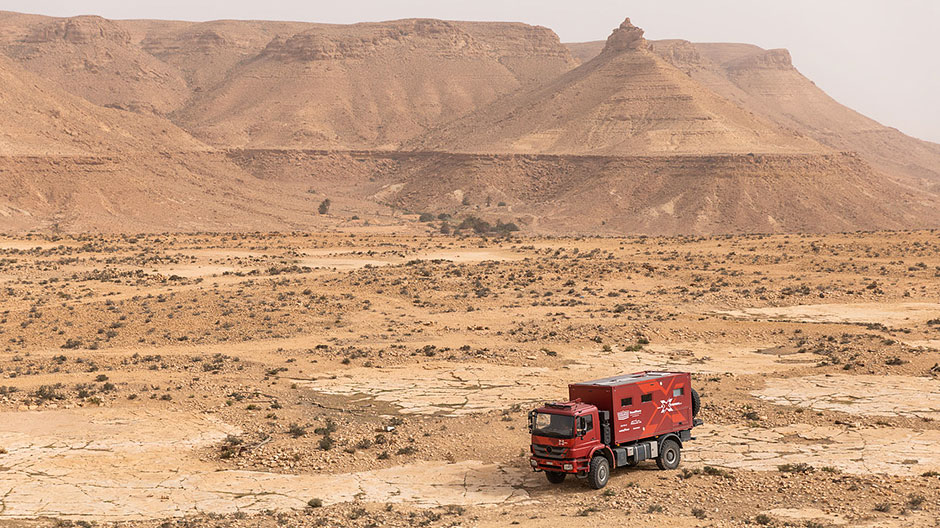
The joy of discovery in the national park.
The Dghoumès National Park is located to the east. The region was declared a national park in order to protect an eco-system with animals and plants typical of the Tunisian Sahara. It’s possible to take an all-wheel drive vehicle like our Axor into a canyon at the edge of the park. In theory at least. We walk a little way in to it and decide that some parts may be too narrow.
Our caution is rewarded: in the form of Oryx antelopes. Only a few decades ago these animals with magnificent horns were almost extinct in the Arab world. In the meantime there are now colonies in several places, including today’s Dghoumès National Park. We are able to observe and even photograph a group of these animals that are still very rare.
A second off-road tour.
Our next stop is Douz, the gateway to the desert. Here a sandstorm forces us to interrupt an off-road route across the dunes – the very route we reported on last time. We have no choice but to wait it out at a campsite.
As soon as the sky is blue again, we set off on part 2 of the off-road tour! The Axor has no trouble with this challenge. Thanks to the short wheelbase and the high ground clearance there is enough space under the transfer case for the Axor to overcome short, peaked sand dunes. Reduced tyre pressure is very important to do that – we chose three bar. And depending on the obstacle you have to use the differential locks and reduction gear properly – often both at the same time.
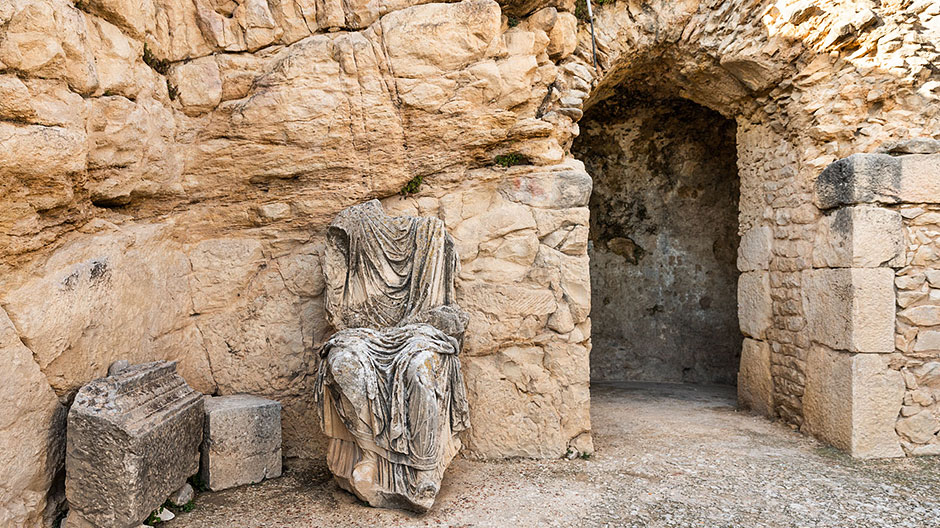
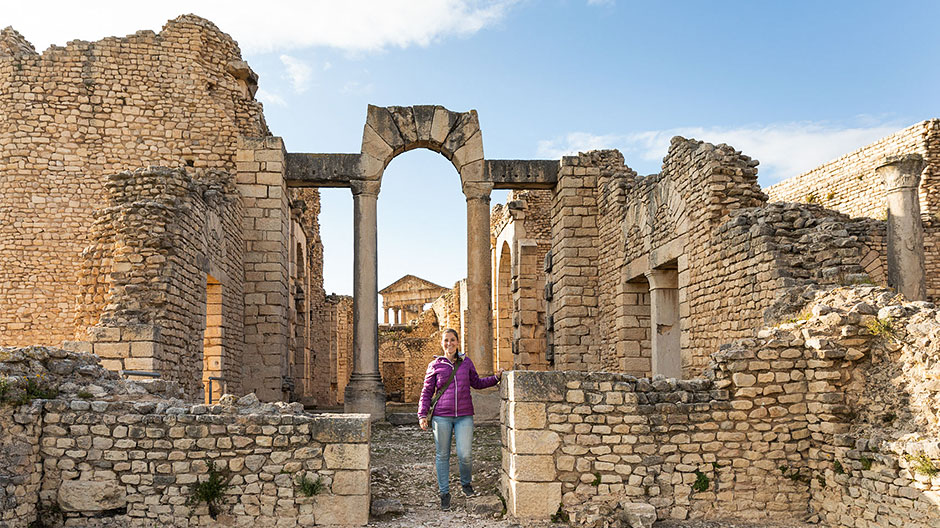
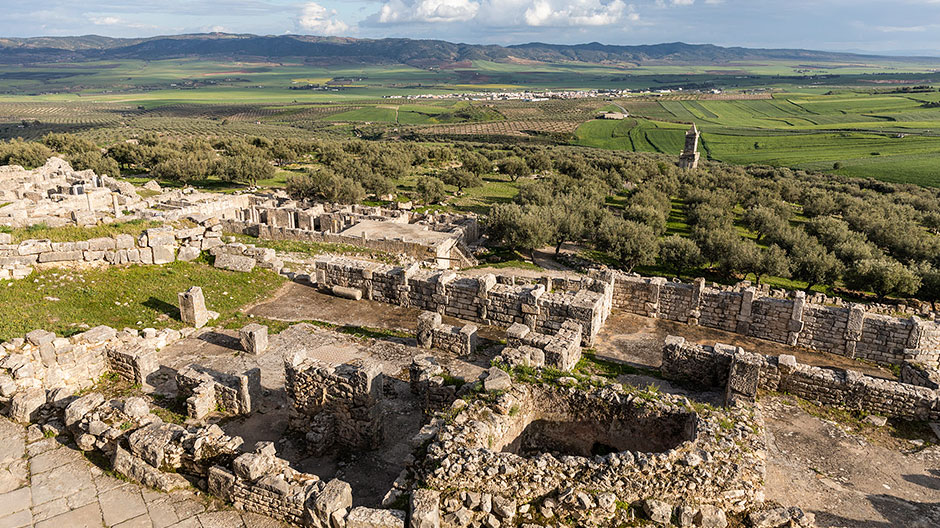
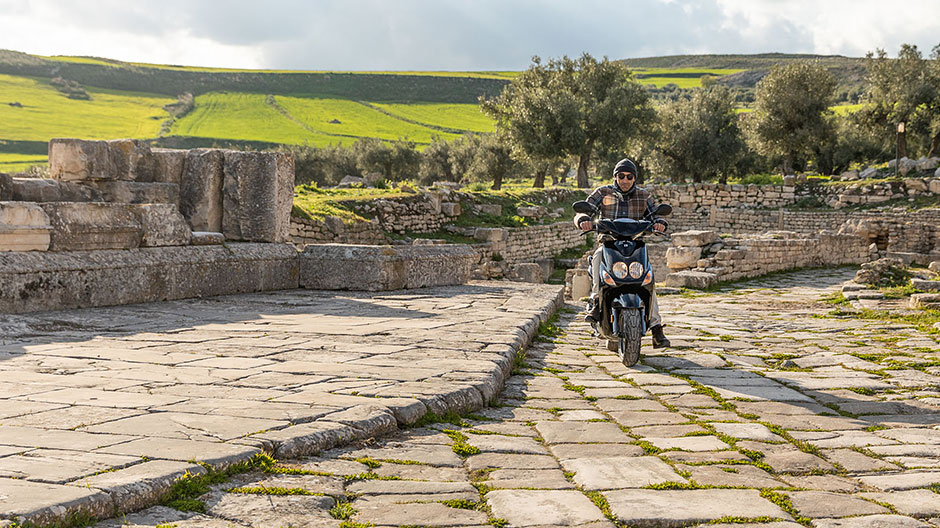
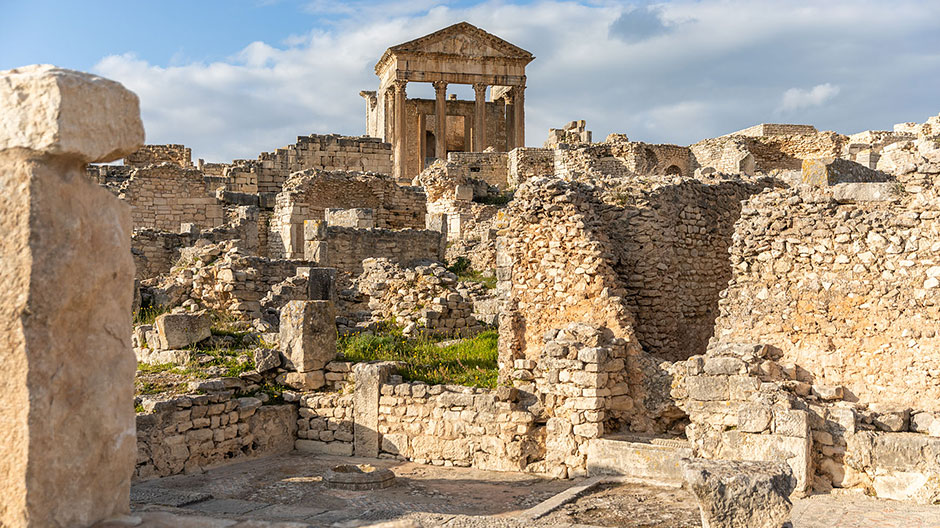
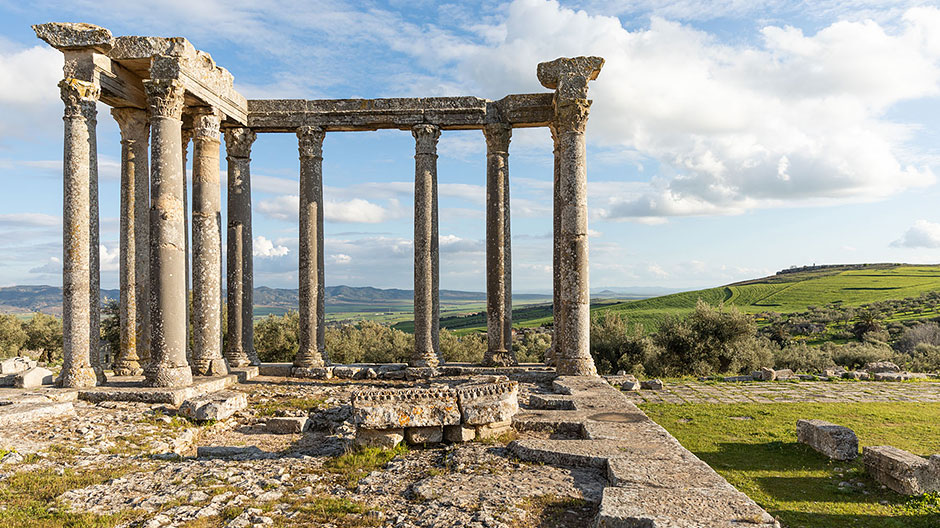
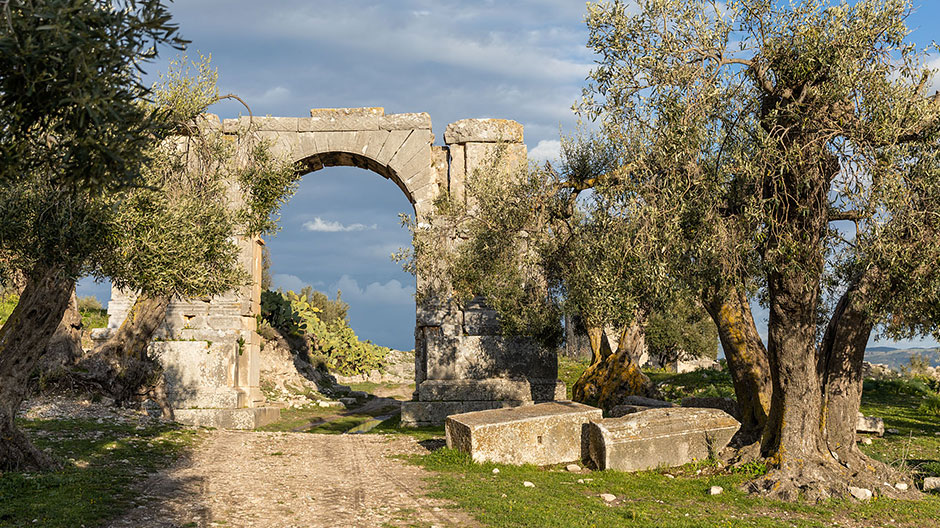
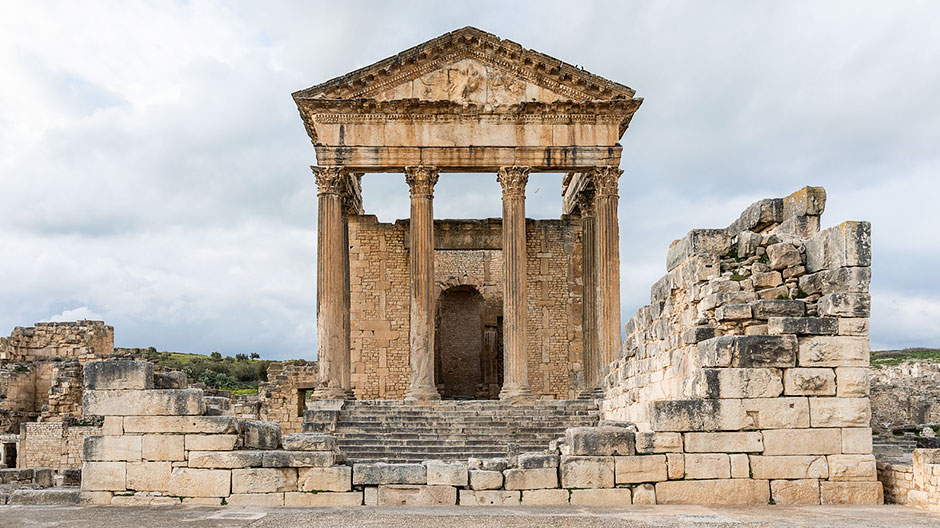
Absolutely no light pollution.
Together with our German friends with the Zetros, we camp at Fort Ksar Ghilane. Here, at a Roman fort, in the middle of a dune field, far away from civilisation we realise that we are rarely lucky enough to see so many stars in the sky.
We drive eastwards and reach Ksar Ouled Soltane: a collection of clay buildings made up of multi-story granary cellars. Berbers lived here until well into the 20th century. A few decades later, the makers of “Star Wars” converted it into a place on the fictitious planet of Tatooine – a name which they had derived from the nearby town of Tataouine.
Observations during Ramadan.
Once you have gone through this Tataouine and have travelled a few kilometres through the stony desert, you reach Chenini. This too is a Berber village with granary cellars. The difference is that many of the cellars are used for keeping livestock. We stroll through the village and climb into the unused chambers. We spend the night on a stone plateau. With a view of the inhabited village below and the evening song of the muezzin in our ears.
While we are writing this, it is Ramadan, the Muslim month of fasting. For us, this means doing without eating and drinking in public. During the day there is not a lot going on; many of the businesses are closed. At around 5.00 p.m. life returns to the villages and people come out onto the streets to go shopping. Queues form particularly in front of the bakeries. We haven’t yet had any opportunity to try special Ramadan dishes and we’re looking forward to it. As much as we are looking forward to the drive to the coast which we have planned for our next stage of the journey.
4-Xtremes – The World Tour.
An unparalleled journey.
Andrea and Mike Kammermann have been on tour in their Axor for three years. "4-Xtremes – The World Tour" is the motto of the journey that the two Swiss nationals embarked on in mid-2020 and which they share with the RoadStars community. Keep up to date and don't miss out on any of the stunning destinations visited by the adventurous pair.
You can find the current parts from the “4-Xtremes – The World Tour” series here.
You can find the route of the trip before the crossing to South America here.
Photos: 4-Xtremes




Comment
Please log in to post a comment.
14 comments
Bilder können nie zu viel werden... 😄👍
Gruß
Klaus
Bilder können nie zu viel werden... 😄👍
Gruß
Klaus
Viele Grüsse von uns
Viele Grüsse von uns
Gerade das Bild mit dem Sternenhimmel verleiht Ehrfurcht - echt gelungen!
Und soviel Grün hätte ich in Tunesien auch nicht erwartet...
Die Idee von Holger und Manfred finde ich auch klasse:
Ein paar Fotos zwischendurch von "erfahrenen" und "gereiften" MB-LKWs, die in Afrika ihr 2. Leben leben - und immer noch zuverlässig ihren Dienst tun...
Soll aber nur Zusatz sein und nicht eure tollen Bilder von unterwegs ersetzen!
Weiterhin eine gute Fahrt, genießt die tollen Eindrücke - und bis zum nächsten "Etappenbericht"! 😘😉
Gerade das Bild mit dem Sternenhimmel verleiht Ehrfurcht - echt gelungen!
Und soviel Grün hätte ich in Tunesien auch nicht erwartet...
Die Idee von Holger und Manfred finde ich auch klasse:
Ein paar Fotos zwischendurch von "erfahrenen" und "gereiften" MB-LKWs, die in Afrika ihr 2. Leben leben - und immer noch zuverlässig ihren Dienst tun...
Soll aber nur Zusatz sein und nicht eure tollen Bilder von unterwegs ersetzen!
Weiterhin eine gute Fahrt, genießt die tollen Eindrücke - und bis zum nächsten "Etappenbericht"! 😘😉
Das mit den gereiften MB Trucks werden wir in Zukunft berücksichtigen und die Augen offen halten.
Viele Grüsse, Andrea & Mike
Das mit den gereiften MB Trucks werden wir in Zukunft berücksichtigen und die Augen offen halten.
Viele Grüsse, Andrea & Mike
Was für schöne Bilder da kann mann wieder Neidisch werden.
Hoffe das es 2022 endlich wieder in den Urlaub gehen kann ✊✊✊
Was für schöne Bilder da kann mann wieder Neidisch werden.
Hoffe das es 2022 endlich wieder in den Urlaub gehen kann ✊✊✊
Viele Grüsse von uns :)
Viele Grüsse von uns :)
Was ich ja wirklich klasse fände, wenn ihr in Afrika Ausschau haltet, nach treuen und erfahrenen Mercedes-Benz LKW die dort ihren letzten Lebensabschnitt verbringen und echte tägliche Stützen der afrikanischen Gesellschaft sind.
Motto:
Mercedes-Benz LKW - stronger than time!
Was ich ja wirklich klasse fände, wenn ihr in Afrika Ausschau haltet, nach treuen und erfahrenen Mercedes-Benz LKW die dort ihren letzten Lebensabschnitt verbringen und echte tägliche Stützen der afrikanischen Gesellschaft sind.
Motto:
Mercedes-Benz LKW - stronger than time!
Das "unwirklich wirkende" Bild mit dem Sternenhimmel ist einfach gelungen, vor allem wenn man diese Nachthimmel abseits von Ortschaften (z.B. in der Sahara), mit der absoluten Stille - wie ich selbst - schon mitterleben durfte 👌
Ich beneide Euch grad wirklich für diese einmaligen Erlebnisse 😉 Weiterhin eine inspirierende, schöne Zeit u. hoffentlich auch noch mal "Kammermanns-Sahara-Sandblech-Einsatzbilder" 😜😅 (isch en Joke)
Das "unwirklich wirkende" Bild mit dem Sternenhimmel ist einfach gelungen, vor allem wenn man diese Nachthimmel abseits von Ortschaften (z.B. in der Sahara), mit der absoluten Stille - wie ich selbst - schon mitterleben durfte 👌
Ich beneide Euch grad wirklich für diese einmaligen Erlebnisse 😉 Weiterhin eine inspirierende, schöne Zeit u. hoffentlich auch noch mal "Kammermanns-Sahara-Sandblech-Einsatzbilder" 😜😅 (isch en Joke)
Wir sind froh das unsere Bergungsmittel auf dieser Reise bisher nur für andere Fahrzeuge zum Einsatz kamen :D aber...wenn man lange genug Offroad fährt, ist es nur eine Frage der Zeit bis man sich festfahrt. Sprich früher oder später (lieber später) kriegst du noch die Action Bilder :D :D
Aber erstmal sammeln wir noch ein paar "Karma-Punkte" indem wir anderen helfen :D
Wir sind froh das unsere Bergungsmittel auf dieser Reise bisher nur für andere Fahrzeuge zum Einsatz kamen :D aber...wenn man lange genug Offroad fährt, ist es nur eine Frage der Zeit bis man sich festfahrt. Sprich früher oder später (lieber später) kriegst du noch die Action Bilder :D :D
Aber erstmal sammeln wir noch ein paar "Karma-Punkte" indem wir anderen helfen :D
Kann euch versichern, dass Ihr den extrem feinen Saharasand/-staub definitiv trotz bestmöglicher Reinigungen auch nach Jahren noch in Ritzen/Fugen an unmöglichen/unerwarteten Stellen auffinden werdet, denn den werdet Ihr nur noch durch komplettes Zerlegen und Einzelteilreinigung (ist eher unrealistisch) des Lkw´s/Aufbaus wieder los. Ist/bleibt einfach eine "schöne" Erinnerung an Eure Wüstentrips 😉😀
Machets wiiterhin guet, reiset sicher und bliibed gsund ✌️
Kann euch versichern, dass Ihr den extrem feinen Saharasand/-staub definitiv trotz bestmöglicher Reinigungen auch nach Jahren noch in Ritzen/Fugen an unmöglichen/unerwarteten Stellen auffinden werdet, denn den werdet Ihr nur noch durch komplettes Zerlegen und Einzelteilreinigung (ist eher unrealistisch) des Lkw´s/Aufbaus wieder los. Ist/bleibt einfach eine "schöne" Erinnerung an Eure Wüstentrips 😉😀
Machets wiiterhin guet, reiset sicher und bliibed gsund ✌️
Ich lese Eure Reiseberichte sehr gerne.
👍👍👍👍👍⛟😎😷
Ich lese Eure Reiseberichte sehr gerne.
👍👍👍👍👍⛟😎😷